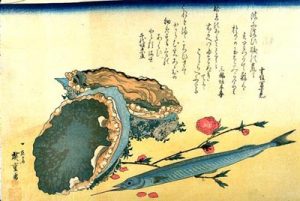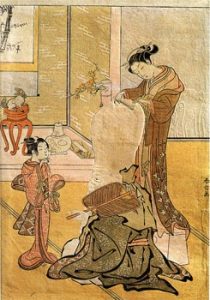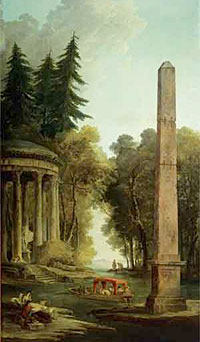Landscape poetry
 My lessons in art history are different. I give lectures to adults, and I try to talk more with the children, to play, to bring about “co-creation” in them. Especially fascinating for both parties are classes devoted to the landscape genre. The first lesson in landscape for first-graders (in an art school for first-graders 10-11 years old) is traditionally held – first you need to get acquainted with the features of the genre, its varieties, with the most famous Russian landscape painters. Continue reading
My lessons in art history are different. I give lectures to adults, and I try to talk more with the children, to play, to bring about “co-creation” in them. Especially fascinating for both parties are classes devoted to the landscape genre. The first lesson in landscape for first-graders (in an art school for first-graders 10-11 years old) is traditionally held – first you need to get acquainted with the features of the genre, its varieties, with the most famous Russian landscape painters. Continue reading
Art Evaluation Criteria
 The term “art”, the definition of “art” can be attributed to a variety of objects – from prehistoric drawings on stones and ceramics to the rubble of household and industrial trash in art galleries. But although the field of art also includes music, theater, ballet and literature, most often this term implies visual art, and first of all painting.
The term “art”, the definition of “art” can be attributed to a variety of objects – from prehistoric drawings on stones and ceramics to the rubble of household and industrial trash in art galleries. But although the field of art also includes music, theater, ballet and literature, most often this term implies visual art, and first of all painting.
For centuries, people have tried to understand what art is. Continue reading
Pictures of the Elusive World
 Originality is the main feature of the Japanese ukiyo-e engraving. Not having analogies in the art of other countries of the Far East, this system formed the basis for the formation of not only the culture of Japan itself, but also influenced the historical course and the formation of the whole world culture.
Originality is the main feature of the Japanese ukiyo-e engraving. Not having analogies in the art of other countries of the Far East, this system formed the basis for the formation of not only the culture of Japan itself, but also influenced the historical course and the formation of the whole world culture.
Nearly two centuries (XVII – XIX centuries), belonging to the Edo era, existed ukiyo-e, originated in the depths of urban culture and passed a long and interesting way, captured by the masters of Japanese engravings creating their paintings in different periods. Continue reading
What is your power, Amulet?
 Talisman “Knock on the tree” For a long time, trying to protect themselves, people endowed various objects with mystical, supernatural properties. Different charms, talismans, amulets have long had different meanings, but they all had one function – to protect and protect people.
Talisman “Knock on the tree” For a long time, trying to protect themselves, people endowed various objects with mystical, supernatural properties. Different charms, talismans, amulets have long had different meanings, but they all had one function – to protect and protect people.
Amulet considered the subject, which was attributed to the miraculous ability to protect the owner from disaster, illness and “evil spell.” Amulet attributed the magical property to protect or protect people and animals, especially the warrior and his horse, house and utensils, tools and weapons from evil demons and envious people. Continue reading
Aphrodite
 Aphrodite or Venus – the goddess of love. Her name has become synonymous with Love and Beauty, and to this day, the artists embody in them their idea of Beauty.
Aphrodite or Venus – the goddess of love. Her name has become synonymous with Love and Beauty, and to this day, the artists embody in them their idea of Beauty.
In ancient myths, the image of Aphrodite is not so romantic. According to one of the earlier versions, it came from the blood of the insulated Crown of Uranus, which fell into the sea and formed foam. Continue reading



